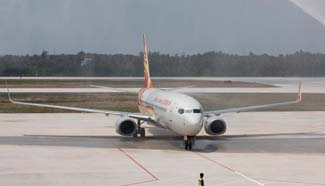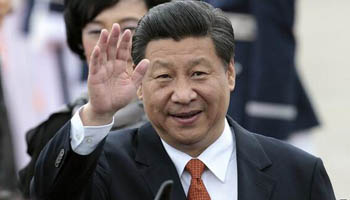A new combat force is driven by new demands, supported by new technologies and defined by new capabilities. It represents future military technologies and operation modes and reflects national strategy. It commands the heights of military transformation, which is essential to its construction and applications.
A new war landscape
The new wins. The new combat force is revolutionizing established knowledge of warfare and combat. Some leading powers are developing combat forces in the unmanned, space, network and optical energy fields.
Unmanned combat: Robotics with remote and autonomous control have emerged in recent years. Unmanned aerial vehicles (UAV), robotic devices on the ground, water and under water have been applied to warfare. The United States has deployed UAVs, such as the “Global Hawk” and “Predator,” in actual combat for surveillance, communication and attacks. In Afghanistan, a U.S. drone strike killed al-Qaeda military chief Mohammed Atef. The U.S. military has stepped up research and development of new UAV types, including the X-47B and MQ-4C. The former has undergone trial flights on aircraft carriers and will probably cooperate with manned fighters in the future. It is expected that UAVs will comprise up to 90 percent of U.S. air force aircraft. Russia has also predicted that unmanned forces will be the main battle equipment by around 2025. Autonomously smart armies will transform warfare.
Space combat: The United States is implementing a global fast combat system that uses land-based intercontinental ballistic missiles, submarine-launched ballistic missiles, hypersonic cruise missiles, such as the X-51A, and aerospace vehicles, such as the X-37B, to build a conventional combat system capable of reaching any target globally within an hour. The United States has spared no effort to develop hypersonic weapons. Its anti-missile and anti-satellite weapons system and space shuttles have achieved basic actual combat capability. It is predicted that by 2020, the United States will have a comprehensive strategic advantage in offense and defense. Russia has also drafted a plan to revive its space forces with about 50,000 personnel. Russia has also stepped up its development of hypersonic aircraft and modern space combat systems. Countries like India and France are also actively developing hypersonic weapons.
Network combat: Leading powers are focusing on network electromagnetic combat technologies. The United States initiated network operations and has cyber command centers in land, sea, air forces and the Marine Corps. It has even developed a network attack troop and more than 2,000 virus weapon systems. The United States has effectively deployed airborne network attack systems, such as Suter V, in Syria and Iran. Construction has begun on a national cyber range, a network space data security center and other projects. Russia has built a special information troop and its defense departments are actively developing network specialists. It plans a network combat troop within its space force.
Optical energy combat: Directed-energy weapons (DEW) emit millimeter waves, high-power microwaves, laser or electromagnetic pulses. Laser weapons have drawn attention due to their accuracy, quick deployment and low cost. Leading countries have made breakthroughs in laser weapon development. The United States has successfully tested laser weapons in the air, and on sea and land. They can destroy missiles, artillery and UAVs. It is also actively developing laser attack and defense systems. It is expected that laser weapons and other DEWs will gradually be applied in combat and transform modes of operation and killing mechanisms.










